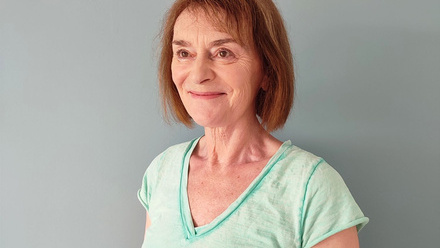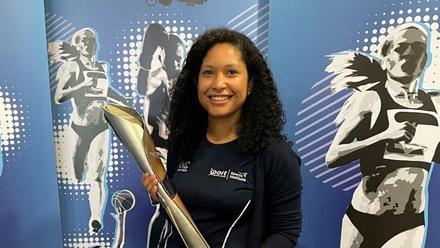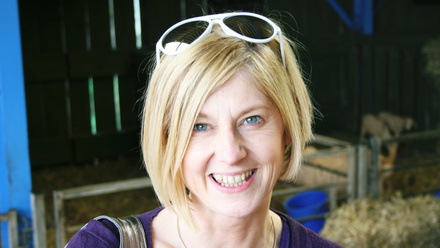by Jenny Blackhouse, Medicine Lead Dietitian & Sarah Bailey, Operational Lead Dietitian, Cardiff and Vale University Health Board.
Emergency admissions to hospital are always a distressing time, particularly for the older adult. The hectic, noisy and unfamiliar environment often heightens feelings of anxiety and loneliness. Accident and Emergency (A&E) staff recognise the increasing care and dependency needs of the people that arrive at their door, reflecting an ageing and more frail population.
Traditionally, the front door is the domain of the physical therapies of occupational therapy and physiotherapy. However, dietitians at Cardiff’s University Hospital of Wales decided to initiate an innovative service in their A & E department, focused on prioritising patients’ basic nutrition and hydration needs and ensuring they are placed at the centre of their care pathway.
Cardiff and Vale University Health Board is one of the largest healthcare organisations in Europe. Service pressure on NHS emergency departments makes headline news throughout the UK. There are over 2 million unplanned emergency admissions each year for people over the age of 70 in the UK. This can be an unsettling time for patients, especially the elderly, who can become decreasingly independent as a result of their inpatient stay. In healthy older adults, ten days of bed rest results in a substantial loss of lower extremity strength, power, and aerobic capacity, and a reduction in physical activity (1 - see references below). Research from Silvester in 2014 identified emergency admissions, which account for less 45% of admissions, consume 70% of hospital bed days (2).
It is well recognised that malnutrition is both a cause and consequence of disease in adults and children. About one in three patients admitted to acute care will be malnourished or at risk of (3). The cost of malnutrition in England is estimated to be £19.6 billion per year, and about half of this expenditure is due to older people (>65 years) (4).
We know the benefits of improving nutritional care and providing adequate and appropriate hydration are immense, especially for those with long-term conditions and problems such as stroke, pressure ulcers or falls. Despite good evidence that specific efforts to correct nutritional problems improve health outcomes, they often go unrecognised and untreated (3). A scoping exercise here at UHW illustrated that patients’ nutrition and hydration needs were not being consistently met across emergency medicine. Nursing staff recognised the importance of nutrition and hydration but acknowledged there was little time to fully address these needs in an environment where medical emergencies occur and life-saving treatment is paramount.
Doing the right thing, at the right time, to the right patient
In December 2017, the dietetic service applied for funds to the Intermediate Care Funding (ICF) to initiate a nutrition and dietetic service model in the Emergency Unit department focusing on patient safety, dignity, compassion, and quality healthcare. The service was delivered over a three-month period with data collected for eight weeks. The primary goal was to deliver a value-based healthcare approach to the service.
The dietetic service nutritionally screened patients admitted to the Emergency Unit for malnutrition and dehydration risk to identify the need for any special diets, as well as provide specialist advice to the multidisciplinary team, such as the management of enteral feeds and appropriate fluid thickening techniques. There were two dietetic support workers nutritionally screening between 8 and 6pm, seven days a week with assessment and input from senior dietitians, working alongside the dietetic support worker.
The aims of the service included:
- To identify patients with nutrition and hydration concerns on admission to the Emergency Unit and prevent adverse patient events related to incorrect provision of diet/fluids or lack of access to diet and fluids.
- To provide timely dietetic input to the Emergency Unit.
- To improve provision of diet and fluids to patients in Emergency Unit.
- To reduce time to dietetic referral for patients admitted via Emergency Unit to prevent delay in addressing nutrition and hydration needs.
- To establish an integrated MDT at the front door to ensure a complete holistic assessment of patient needs.
- To quantify brief dietetic interventions i.e. first-line falls advice, smoking, iron, healthy eating, referrals/ signposting of Emergency Unit patients to community services and assess the impact and uptake of this
What did a typical day look like for the patient?
Mrs Evans (pseudo name) is admitted to the Emergency Unit with a fall. Once the medical team have seen the patients, the dietetic support worker screens the patient and asks her some questions about her appetite, fluid intake and weight. The support worker offers her a cup of tea and a snack, which she is extremely grateful for as she has not eaten since the ambulance picked her up several hours ago.
Within four hours the dietitian reviews Mrs Evans. Advice regarding food fortification and the need for nutritional supplements is given. Mrs Evans is encouraged to have more fluid and is given information on how to improve this, as this is likely to be increasing her falls risk. The dietitian is able to explore how Mrs Evans might benefit from a lunch club and meals on wheels when she goes home and provides her with information on third sector facilities in the community, where clinically appropriate. To end the consultation, Mrs Evans is offered another drink and snack which she happily accepts.
The dietitian shares the information collected with the occupational therapist and physiotherapist who are due to see her next. At lunchtime, Mrs Evans struggles to feed herself, so the dietetic support worker helps her to cut up her food and open food packets. Later that day, Mrs Evans is able to be discharged from the Emergency Unit with all the information that will contribute to reducing her falls risk and likelihood of readmission.
Impact
Discovery interviews were undertaken with patients, relatives and staff and themes were then mapped for evaluation. The feedback from these was extremely positive and the service was hugely appreciated by the multidisciplinary team. Patients’ families expect life-saving clinical care to be delivered and to then have a service where cups of tea/ coffee and snacks are offered, makes all the difference.
Feedback included the following comments:
- “The assistants (support workers) have been really good in supporting nursing staff…it’s just been amazing as there are not enough staff to help the patients…if three or four patients need assistance… you are just physically not going to get around them, their porridge is going to be cold.”
- “The assessments of their (patients) nutritional needs early on in their admission to hospital is obviously going to improve patient outcomes…and just their general patient morale, they’re getting more food and drink.” (Staff nurse)
- “What a difference to the last time we were here. Thank you for taking the time to give my Dad a drink.” (Relative)
- “This has a real positive impact on our patients, both when they are in the unit and when they have gone home.” (Staff nurse)
Malnutrition
Data collected demonstrated that 28% of patients were identified as at risk of malnutrition and referred to the dietitian, 37% of whom were diagnosed as clinically malnourished using ESPEN criteria (3).
Dehydration
17% of patients were screened as high risk and 49% at moderate risk of dehydration. These patients received dietetic advice to improve their fluid intake to help prevent the side effects of dehydration. Almost all (97%) patients admitted with a fall were at moderate or high risk of dehydration, suggesting a strong relationship between dehydration and falls risk.
Optimal hydration management has a fundamental role to play in falls prevention and reducing future hospital admissions. 89% of patients who were offered a drink by the dietetic staff accepted one. Patients reported an unwillingness to interrupt busy nursing staff to ask for a drink. Access to food and drink ‘out of hours’ doubled with the initiation of the dietetic service, with 100% of patients in the Emergency Unit being offered food or drink.
Special diets
On 43 occasions adverse events were potentially avoided by dietetic staff identifying and taking action for patients requiring modified diet or fluids. This has implications for patient safety and future avoidance of adverse events related to choking. In 2015, patient interviews undertaken in the Emergency Unit identified that four out of five patients requiring a special diet who had been in the service for more than 24 hours, had not been identified by the admitting team.
Follow-up
Follow-up data was collected for a 20% sample of patients seen by the dietitian. At four-week follow-up, 85% of randomised patients made the changes recommend by a dietitian and 90% had an improvement in either weight (61%) or mid upper arm circumference (29%).
The future
This early intervention and admission avoidance initiative was an innovative opportunity for dietitians to work collaboratively with the multidisciplinary team, with the aim of providing timely, effective patient care; improving patient safety, dignity and patient experience right at the beginning of the patient journey.
This initiative was shortlisted for the Guardian Public Service Awards in November 2017 and placed as runner up in the category of Patient Care. It was shortlisted for the National Patient Safety Awards 2018, Best Patient Initiative in A&E category and The Health Business Awards 2018 in the category of Patient Safety.
Using the data collected, an MSc dissertation is now looking at readmission rates of these patients following dietetic input, and funding was agreed to reinstate the service through this further winter period.
References
1. Kortebein P, Symons TB, Ferrando A, Paddon-Jones D, Ronsen O, Protas E, Conger S, Lombeida J, Wolfe R, Evans WJ. Functional impact of 10 days bed rest in the elderly. J Gerontol A Biol Sci Med Sci. 2008 Oct; 63(10):1076-81.
2. Silvester KM, Mohammed AM, Harriman P, Girolami A, Downes TW. Timely care for frail older people referred to hospital improves efficiency and reduces mortality without the need for extra resources. Age and Ageing. 2014; 43: 472-477
3. Guidance – Commissioning Excellent Nutrition and Hydration. 2015. NHS England.
4. Elia, M. The cost of malnutrition in England and potential cost savings from nutritional. 2015







